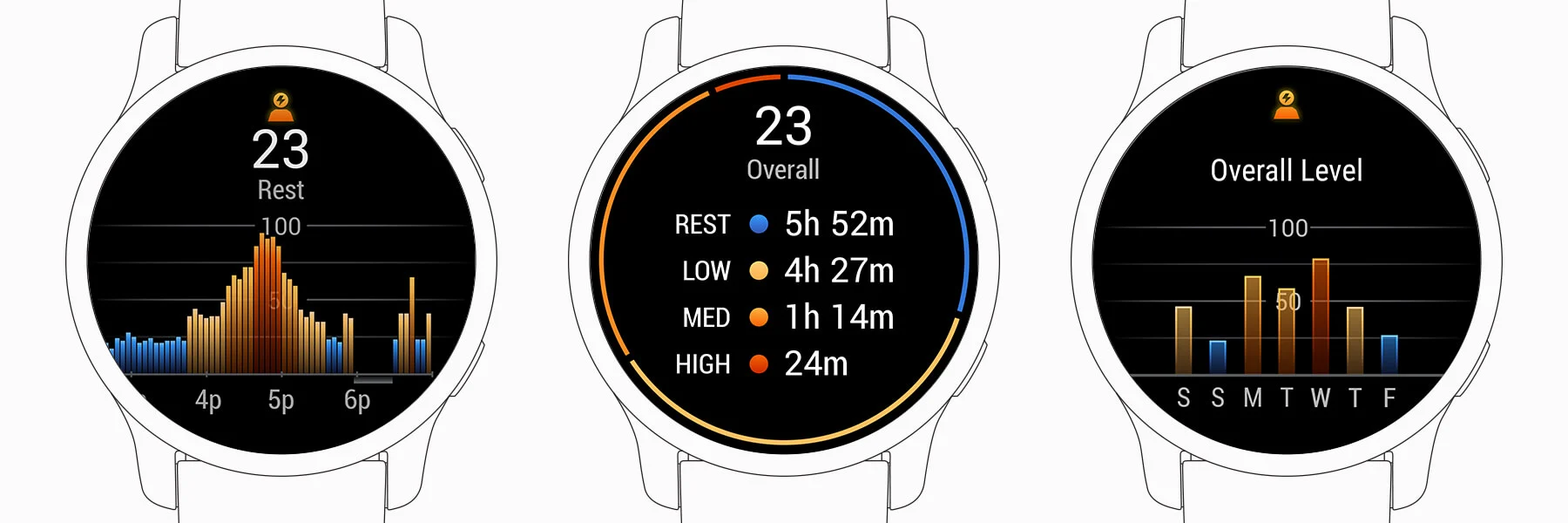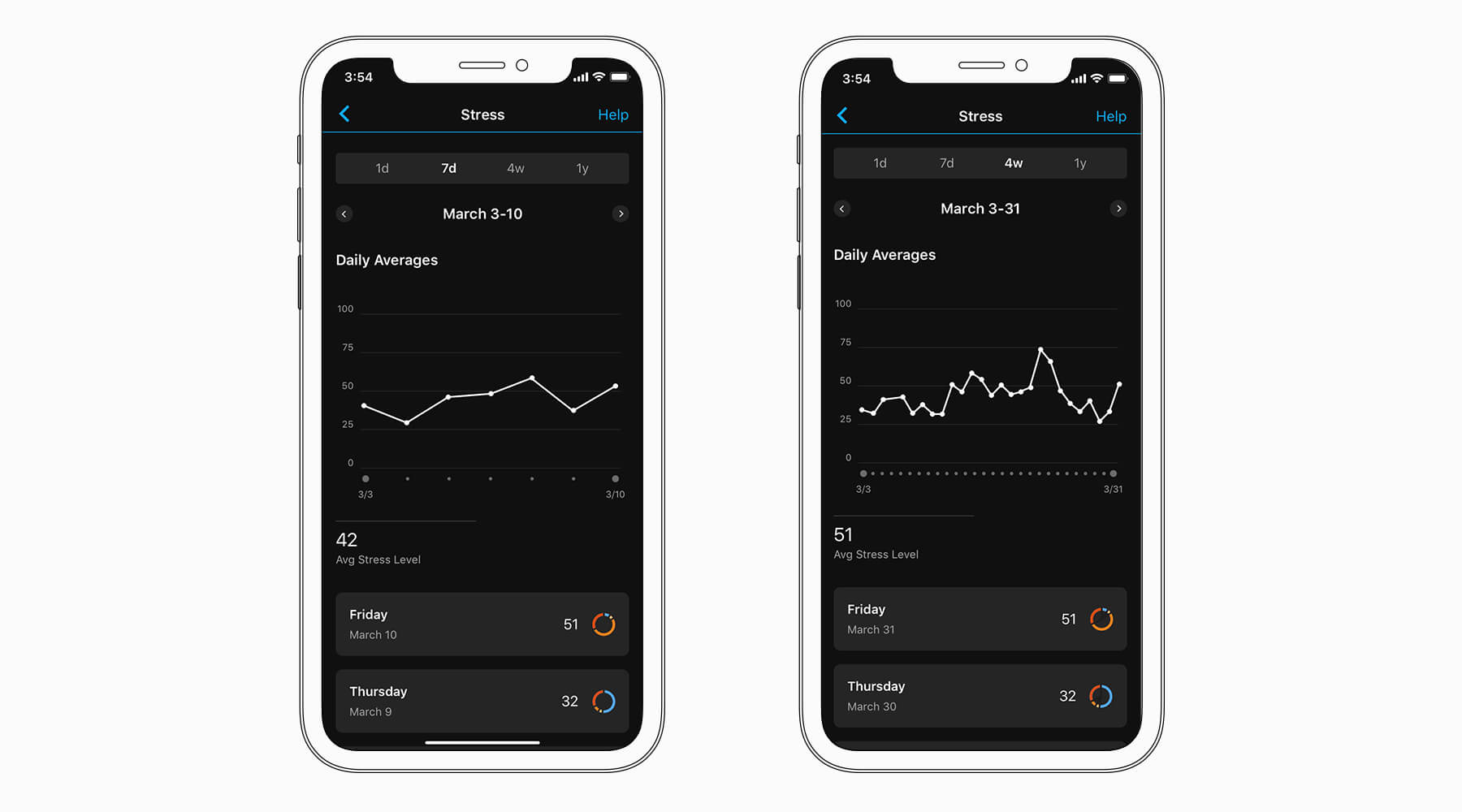
Stress is your body’s natural response to the challenges of life and environment. It is an elevated physiological state that prepares you to react quickly to whatever comes next. All-day stress tracking on your Garmin smartwatch is based on a well-established and scientifically validated understanding of your autonomic nervous system (ANS)1.
Stress levels (0–100) are estimated by the Firstbeat Analytics engine, primarily using a combination of HR and HRV data. This data is recorded by the optical heart rate sensor on the back of your device.
Divided into sympathetic and parasympathetic branches, your ANS regulates your physiological systems to best match the expected demands of your current situation. The sympathetic branch dominates when it’s time for action. Your pulse quickens, blood vessels dilate, digestion is interrupted, and adrenaline flows. This is sometimes referred to as the fight-or-flight response. In quieter times, the parasympathetic branch is more dominant, and your body enters what is referred to as rest-and-digest mode. This is when your body can repair itself and replenish resources depleted during more hectic times.
Sleep is an especially important opportunity for your body to recover, and, predictably, the parasympathetic branch of your ANS is typically the most active when you are asleep.
Stress levels are not measured by your Garmin device during physical activity because the strain of physical activity itself can be considered stressful. The impact of physical activity is best measured and understood in other ways. Public speaking and running up a flight of stairs can both send your heart racing, but the underlying reasons why are fundamentally different.
Your physiological parameters and your body’s response to stressors are unique. Accordingly, the analytics used to monitor your stress levels are designed to recognise and adapt to your own personal situation. You can improve the quality of the insight gained by wearing your device as much as possible, especially while you sleep, because that is when your stress levels will typically be lowest. This helps create a better understanding of the full range of stress and relaxation states that you experience.
Wearing your device intermittently will still provide some insight into your stress. The details and precise levels, however, may be less personalised compared to what you would see with more consistent usage.
Your stress data reveals your physiological states throughout the day, corresponding to activity occurring within your ANS as it works behind the scenes to regulate your body’s responses.
You can configure select Garmin devices to alert you when your stress level is unusually high. The alert encourages you to take a moment to relax, and the device will prompt you to begin a guided breathing exercise with the relaxation breathing timer.
The stress chart on your device or in the Garmin Connect™ app will show orange bars when your stress level is above 25. Below level 25, the stress chart turns blue. This contrast is the key to identifying stressed and relaxed states.
Around level 25, activity within the sympathetic (stress: fight-or-flight) and parasympathetic (recovery: rest-and-digest) branches of your ANS is roughly equal. At higher levels (25–100), sympathetic activity is more prevalent, preparing you for action. Lower levels (0–25) indicate your parasympathetic system is the more active of the two.
What your stress data doesn’t tell you is why these various states are occurring. That is why it’s important to increase your own awareness of stressors in your life and how your body responds. This is how you can make the most of the stress data your Garmin device collects and how you can work toward finding effective stress management strategies.
For example, elevated stress levels may stem from pressure at work, social anxiety or from something as simple as encountering an aggressive driver on the highway. Elevated stress levels could also be the result of happier situations, such as the excitement of a new job, the thrill of a first date or the jitters a runner feels the morning of a big race. Keep in mind that excessive exercise, consumption of stimulants, poor nutrition and getting sick can also produce higher than normal stress levels.
Regardless of why you experience stress, the key to a healthy, well-balanced lifestyle is to offset these draining experiences with relaxing moments and good quality sleep.
